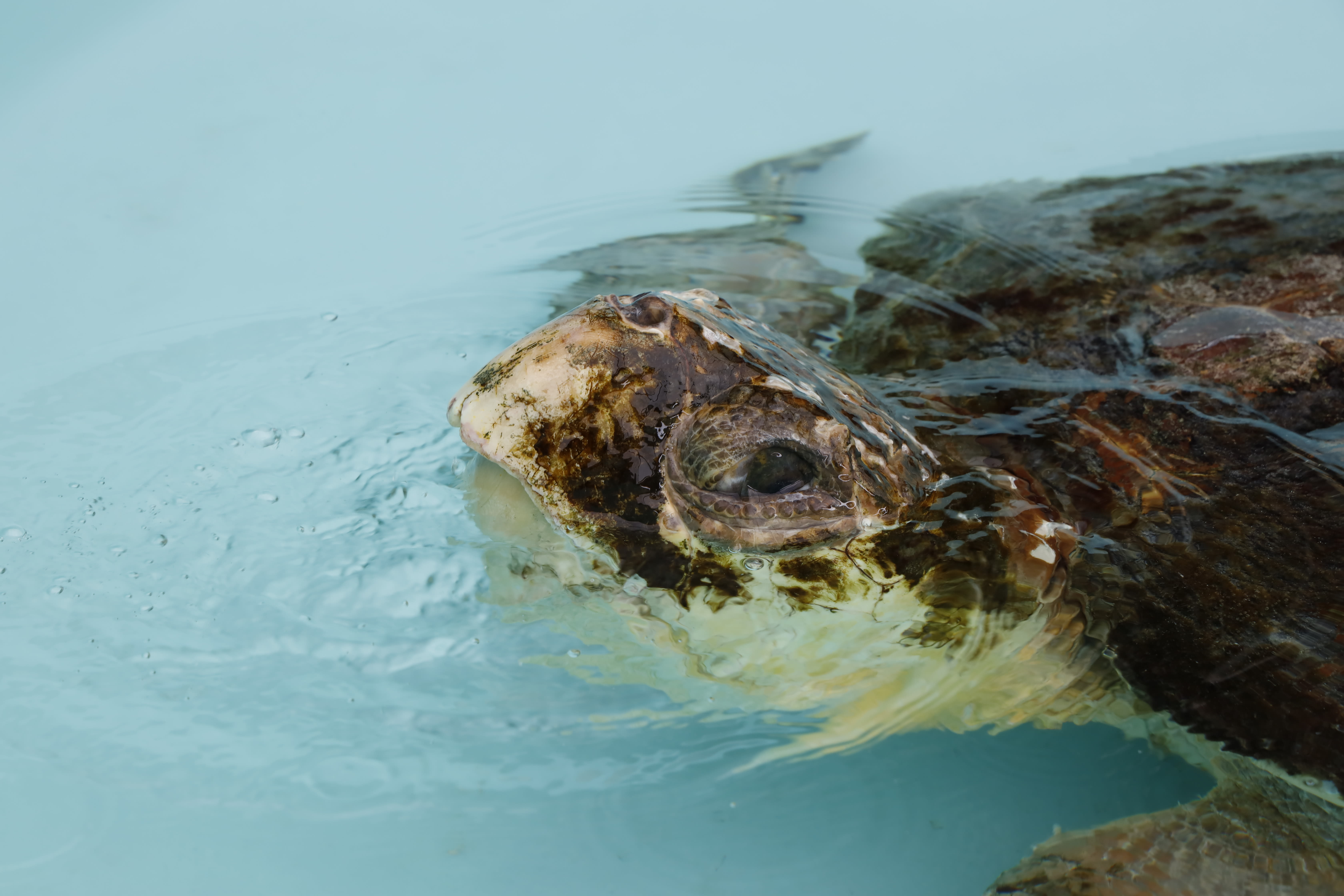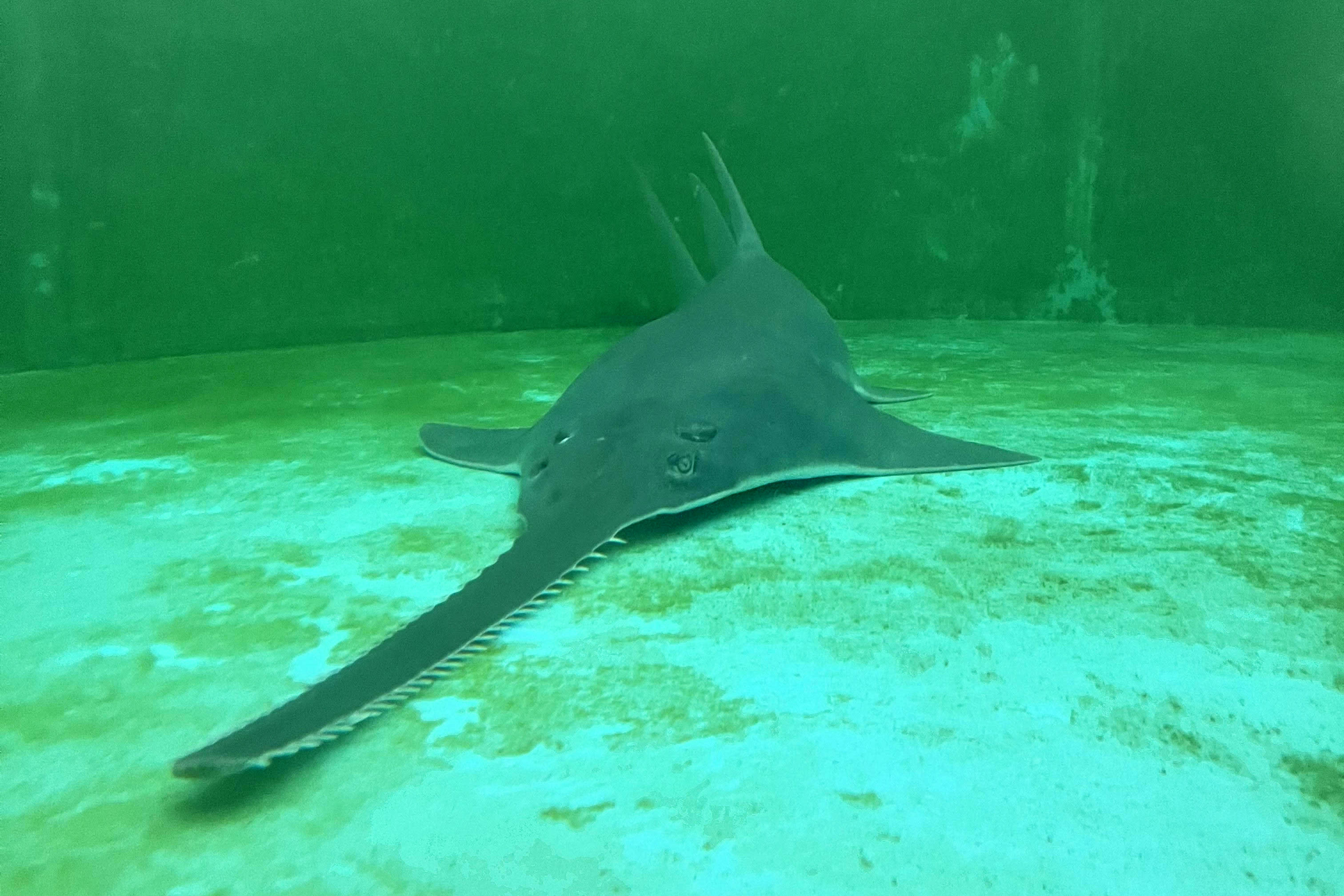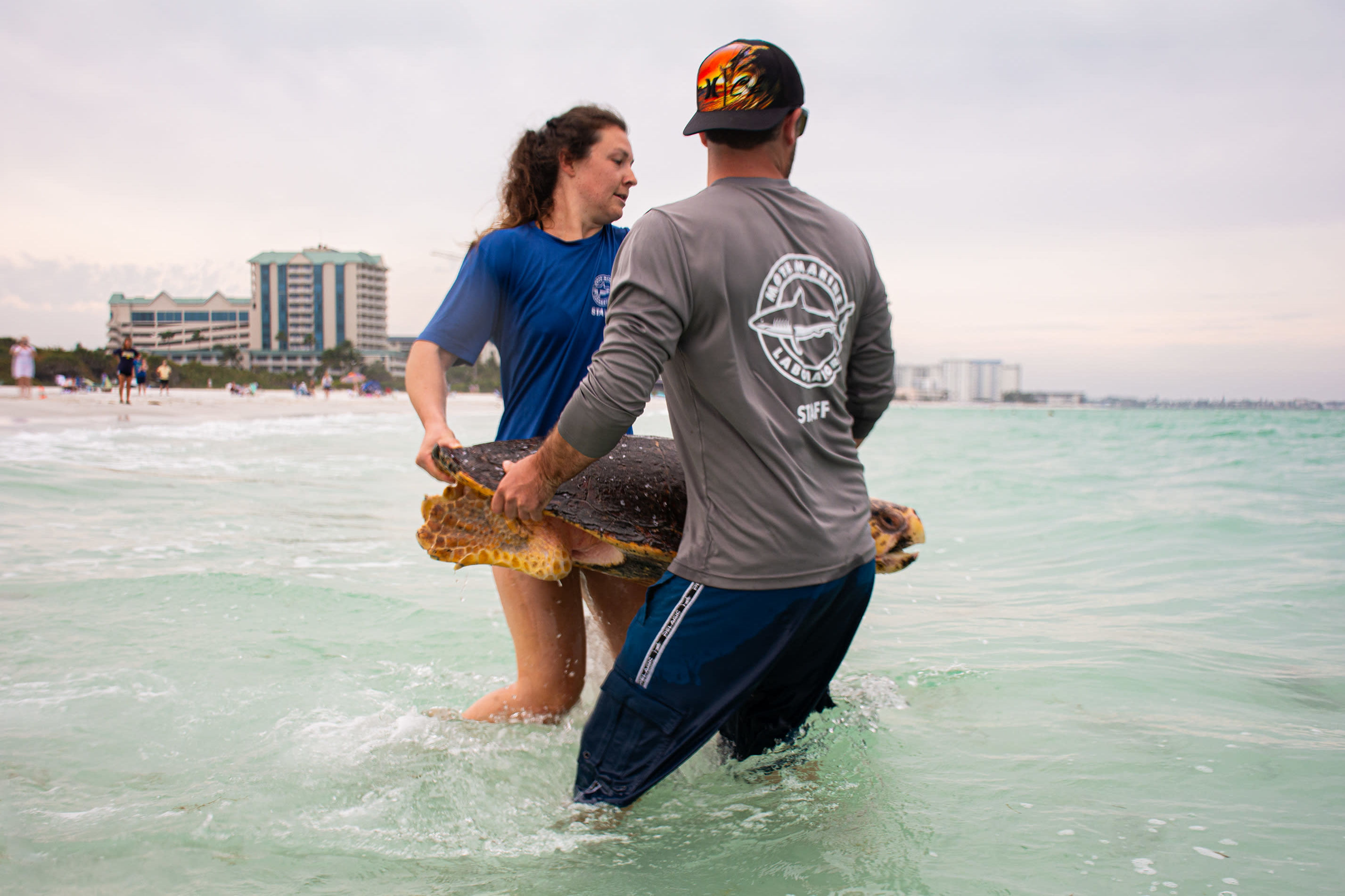Mote, FWC Rescue Two Cold-Stressed Manatees in Sarasota This Week
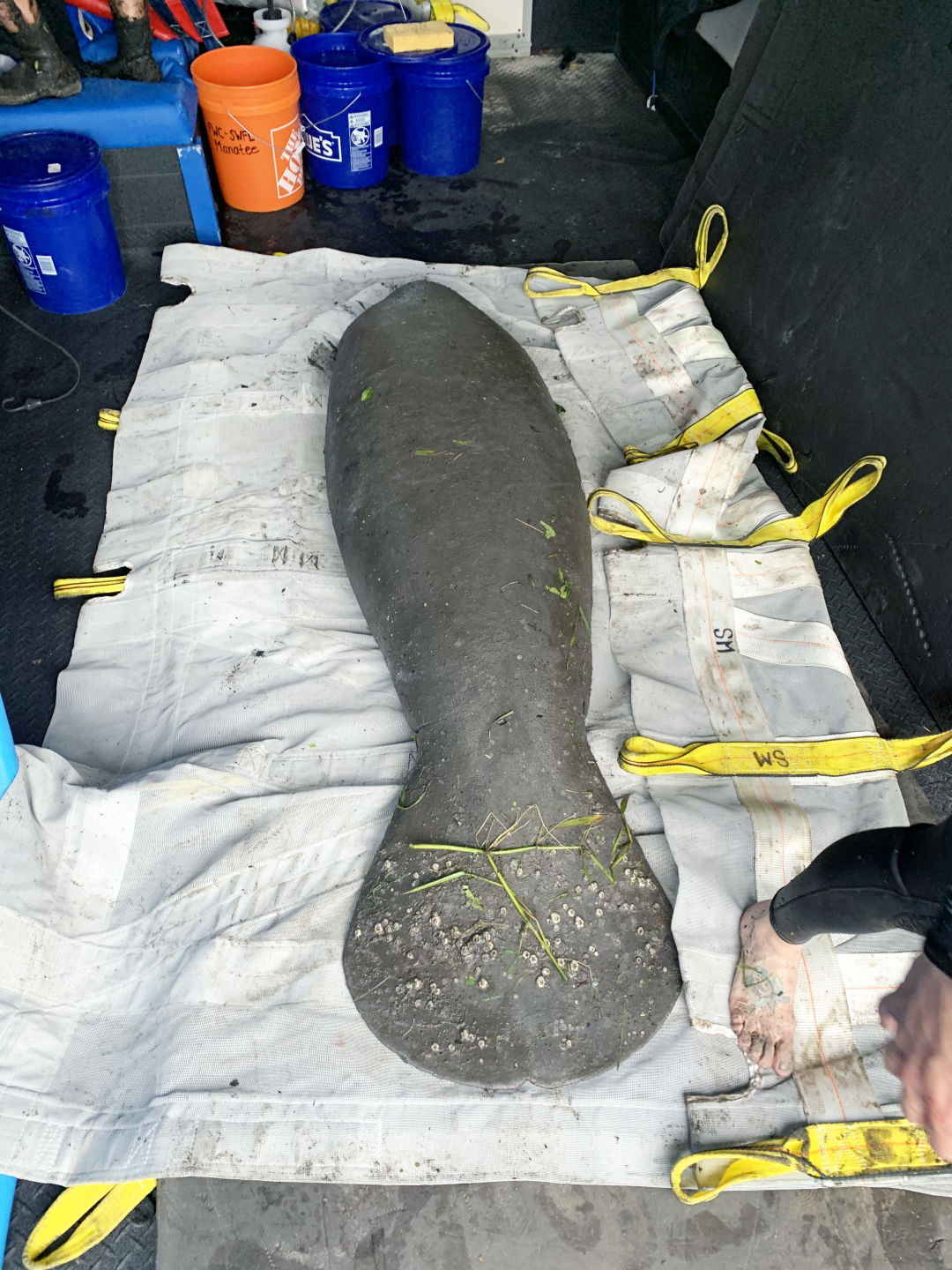
A cold-stressed manatee rescued on Jan. 12 near Phillippi Creek prepares to be transferred to ZooTampa's manatee hospital.
After releasing a rehabilitated adult male loggerhead sea turtle earlier this week, on Tuesday biologists from Mote Marine Laboratory and Aquarium’s Stranding Investigations Program were called upon by the Florida Fish and Wildlife Conservation Commission (FWC) about a manatee in a residential canal connected to nearby Philippi Creek. Upon arrival, the team noticed the animal had signs of cold stress and seemed unable to exit the canal. Given that the water was about 67 degrees Fahrenheit, below the threshold of tolerance for manatees, Mote decided a rescue was necessary.
After Mote’s initial response, FWC led the rescue effort to assist the manatee. A sub-adult female, she was a little more than 6 feet long. The manatee was safely netted onto the shore and transferred into a transport truck that headed for ZooTampa’s David A. Straz Jr. Manatee Critical Care Center, one of four critical care facilities for manatees in the state of Florida and a member of the Manatee Rescue & Rehabilitation Partnership (MRP).
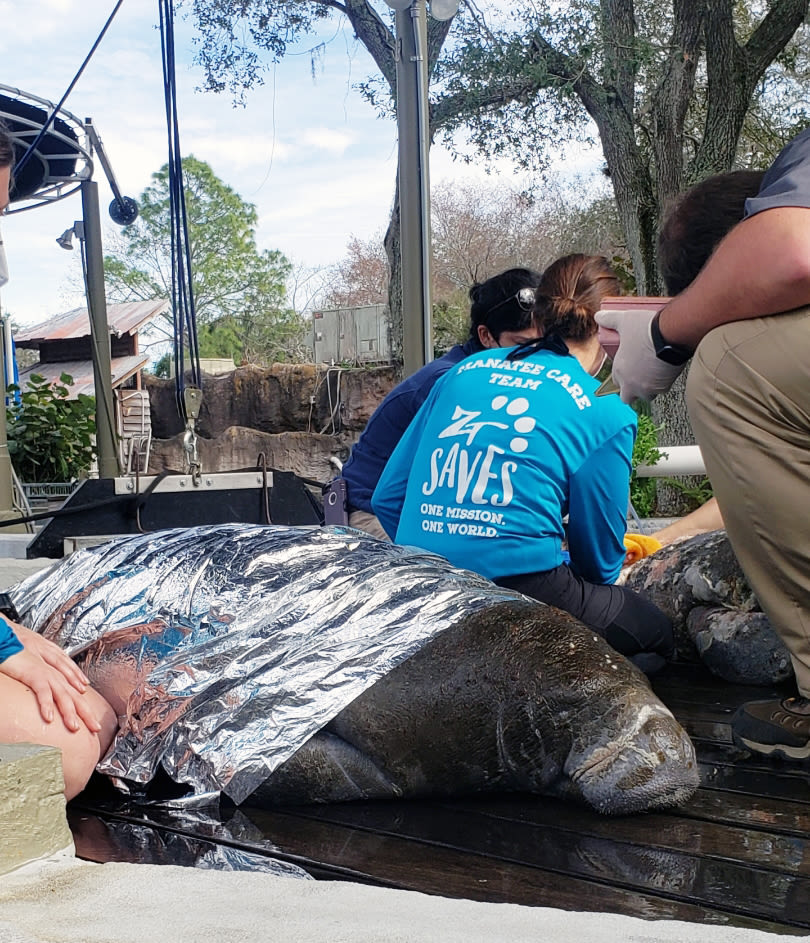
A manatee rescued on Jan. 14 arrives at ZooTampa's David A. Straz Jr. Manatee Critical Care Center.
Just two days later, a similar situation played out in Whitaker Bayou near downtown Sarasota. A second manatee also showed signs of cold stress, and again FWC and Mote worked together again to capture it and transport it to ZooTampa for rehabilitation.
Manatees differ from other marine mammals in that they do not have a layer of blubber, and therefore cannot tolerate water temperatures that drop below 68-72 degrees Fahrenheit. This results in manatees seeking refuge in constant-temperature springs and in the outflows of power plants. However, if a manatee is not able to seek refuge, they can become what is referred to as “cold stressed”. This is especially problematic for smaller, younger animals. Signs of cold stress include the presence of white lesions on the skin, which begin around the extremities, including the animal’s face wrinkles, nostrils, and the edges of its paddle and flippers. These lesions can worsen, resulting in systemic infection that can result in the animal’s death.
If you see a distressed or deceased marine mammal or sea turtle in Sarasota or Manatee counties, call Mote’s 24/7 hotline at (888) 345-2335. For all other areas in Florida, call FWC’s 24/7 hotline at (888) 404-3922. When calling, be ready to provide a thorough description of the animal, its behaviors, and the location. Take photos and video if possible. Never attempt to rescue or push back any animal in distress. This can cause further harm to the animal or injury to yourself.
